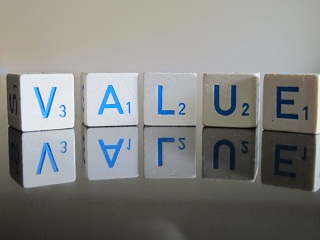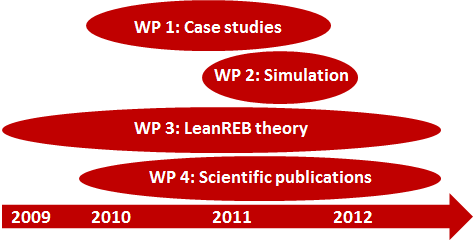 |
| ARVO is Finnish and it means value |
The ARVO research project introduced lean thinking into the field of built environment. Lean management offers a new way of thinking to the professionals in the built environment. A central idea why lean differs from the traditional Western approach is the waste thinking. According to lean, production processes (i.e. value creation processes) include three types of activities:
- Activities that do create value for the customer
- Activities that do not create value for the customer, but are necessary
- Activities that do not create value for the customer
According to lean management, activities that do not create value for the customer are waste and they should be minimised. For example, Hines et al. (2008) have found out that in an information flow environment (for example in an office), only 1 per cent of the activities create value for the customer. Therefore, greater efficiency gains can be achieved by minimising waste activies instead of trying to improve the value adding activities. However, it is not enough to do things efficiently if wrong things are done. Therefore, customer value has also a central role in lean. Customer value should be identified and delivered to the customers.
In addition to waste and customer value, continuous improvement has a central role in lean management. When the environment around us is changing, new waste is generated and the identified customer value begings to lag behind. Therefore, continuous improvements are needed to keep up to deliver the right customer value in an efficient production system.
AIMS OF ARVO
The ARVO project had three aims:
- To develop customer value assessment methods in real estate business
- To evaluate the value creation of service processes in real estate business organisations from customer value perspective
- To develop a leanREB model to support the value creation in real estate business
WORK PACKAGES
The three aims of ARVO were studied through four work packages (WP) from September 2009 to June 2012:

In WP1, the value creation was studied in case studies. Each case followed the same research process including three phases. First, based on customer interviews and questionnaire survey it was studied, how customers were perceiving value. After this, the employees of the organisations, who were responsible of providing identified customer value, described how value is currently created in their value creation processes. Finally, case-specific lean policies were discussed to improve the value creation.
In WP2, the improvement theme continued: it was simulated how the value creation in the cases could be enhanced. Finally, based on the previous case studies, the leanREB model was developed to pinpoint the current issues that are blocking the value creation in WP 3. The results from WP 4 are listed in Publications.
RESEARCH TEAM
The research team includes academics from two universities:
- Aalto University
- Seppo Junnila, professor in real estate business
- Tuuli Jylhä, researcher and project manager (main contact person)
- Lasse Forsman, research assistant
- Jan Olin, research assistant
- Erik Enomaa, research assistant
- University of Salford
- Edward Finch, professor in facility management
- Lauri Koskela, professor in theory based project and production management
- Audrey Schultz, researcher
INDUSTRIAL CO-OPERATION AND FUNDING
The ARVO project was funded by Finnish Funding Agency of Technology and Innovation (TEKES). The project was part of Spaces and Places programme. The other funding and co-operation organisations were Senaatti Properties, Ovenia Ltd., Skanska Ltd., and Ilmarinen Mutual Pension Insurance Company.

